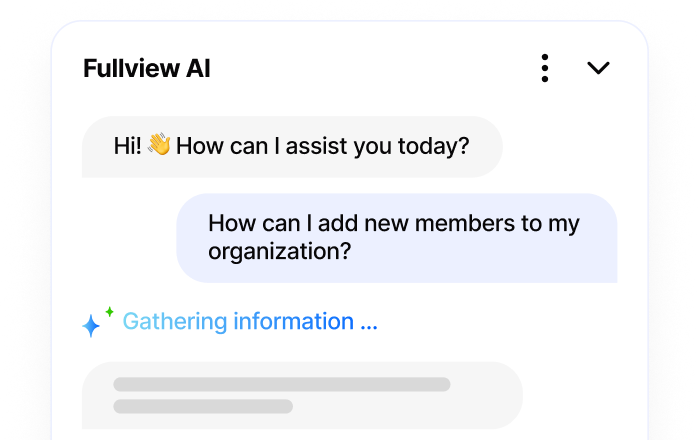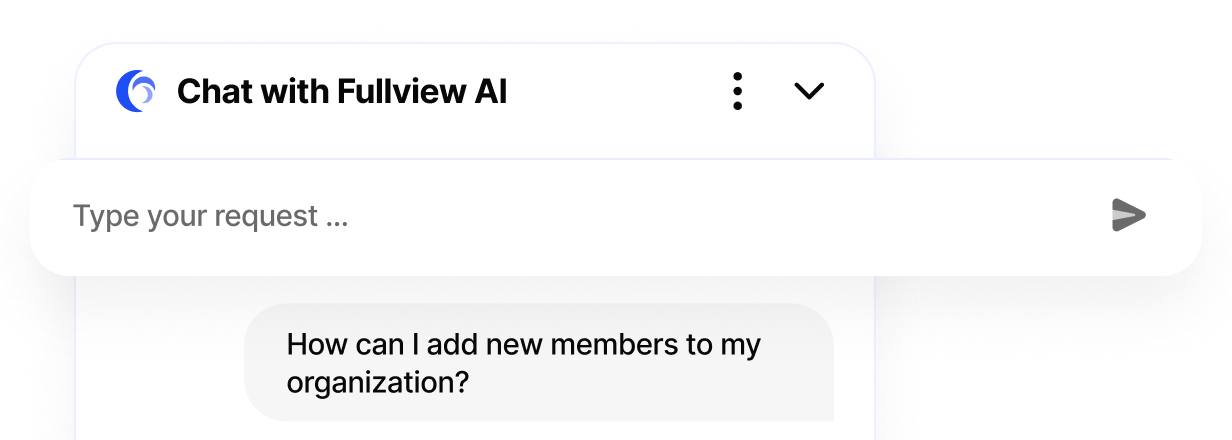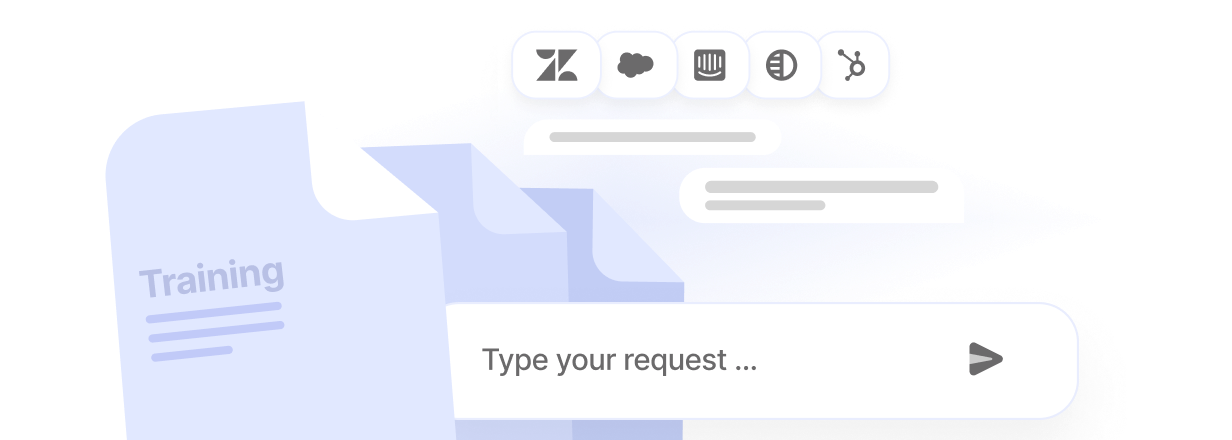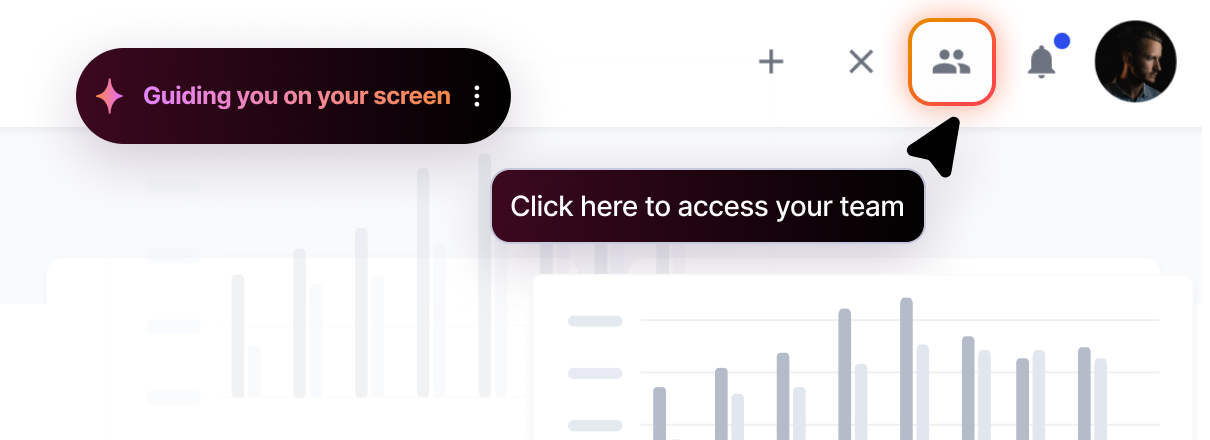TL;DR: The AI customer service market will reach $47.82 billion by 2030, with 95% of customer interactions expected to be AI-powered by 2025 (Servion Global Solutions). Companies are seeing average returns of $3.50 for every $1 invested in AI customer service, with leading organizations achieving up to 8x ROI. This comprehensive roundup analyzes 82 statistics from industry leaders to help understand the current state and future of AI-powered customer support.
AI customer service agents have evolved from experimental technology to business-critical infrastructure. Whether you're researching market trends, benchmarking your organization, or building a business case for AI implementation, this comprehensive statistical analysis provides the data points you need.
We've compiled and verified 82 key statistics from leading research organizations, technology companies, and industry surveys to give you the definitive picture of AI customer service in 2025.
Market Size & Growth Statistics
Global Market Projections
The AI customer service market represents one of the fastest-growing segments in enterprise technology:
- Market value 2024: $12.06 billion (MarketsandMarkets)
- Projected market value 2030: $47.82 billion (MarketsandMarkets)
- Compound Annual Growth Rate (CAGR): 25.8% (2024-2030)
- North American market 2024: $4.35 billion
- North American market 2030: $14.91 billion (22.8% CAGR)
Chatbot Market Expansion
- Global chatbot market 2024: $7.76 billion (Grand View Research)
- Global chatbot market 2030: $27.29 billion (Grand View Research)
- Voice-enabled chatbots 2030: $99.2 billion (18.6% CAGR)
- Retail chatbot spending 2023: $12 billion
- Retail chatbot spending 2028: $72 billion (470% growth)
Regional Market Distribution
- Asia Pacific chatbot spending: 85% of global retail spending despite 53% of population
- North America market share: 31.1% of global AI customer service market
- SaaS segment market share: 62.4% of AI implementations
Current Adoption Statistics
Enterprise AI Adoption
- Organizations using AI overall: 78% use AI in at least one business function (McKinsey)
- Organizations using generative AI: 71% regularly use gen AI in at least one function (McKinsey)
- Customer service professionals using AI: 26% have integrated AI into daily workflows
- Organizations planning AI investment increase: 63% expect to invest more in AI (McKinsey)
Chatbot Implementation Rates
- B2B companies using chatbots: 60% currently use chatbot software (Tidio)
- B2C companies using chatbots: 42% currently use chatbot software (Tidio)
- Large enterprises with chatbot adoption: 46% of chatbot market adoption
- Organizations using conversational AI: 54% use chatbot, VCA or conversational AI (Gartner)
- Call centers with successful AI integration: 25% have successfully integrated AI automation (Zendesk)
Customer Usage Patterns
- Daily chatbot interactions: 27% of shoppers interact with chatbots daily
- Weekly chatbot engagement: 34% engage multiple times weekly
- Customer preference for chatbots: 62% prefer engaging with chatbots over waiting for human agents
- Customers preferring chatbots for simple questions: 74%
ROI & Financial Impact Statistics
Return on Investment Metrics
- Average ROI on AI investment: $3.50 return for every $1 invested
- Top-performing organizations ROI: Up to 8x returns on AI investments
- Average revenue increase: 37% reported by Salesforce customers
- Organizations attributing 20%+ EBIT to AI: 8% (McKinsey high performers)
- Sales teams using AI reporting revenue growth: 83% vs 66% without AI
Cost Reduction Statistics
- Service cost reduction through AI: 25% reduction in customer service costs
- Chatbot interaction cost: $0.50 average per interaction
- Human customer service interaction cost: $6.00 average per interaction (12x difference)
- Projected contact center labor cost savings: $80 billion by 2026 (Gartner)
- E-commerce conversion rate improvement: Up to 30% with AI chatbots
Operational Efficiency Gains
- Increase in customer inquiries handled per hour: 13.8% with AI implementation
- Reduction in average resolution times: 87%
- Daily time savings for service representatives: 1.2 hours through AI-powered tools
- Time savings on calls: 45%, enabling 44% faster issue resolution
- Improvement in first-contact resolution: Up to 30% for SaaS companies
2025 Predictions & Future Trends
Automation Forecasts
- Customer interactions expected to be AI-powered by 2025: 95% (Servion Global Solutions)
- Customer service organizations implementing generative AI by 2025: 80%
- Agent interactions that will be fully automated by 2026: 10% (up from 1.6% today) (Gartner)
- Organizations using chatbots as primary customer service channel by 2027: 25% (Gartner)
Workforce Impact Projections
- Service agents potentially replaced by generative AI by 2026: 20-30%
- Leaders believing teams lack necessary AI skills: 66%
- Agents expressing satisfaction with AI training: 21%
- CX leaders claiming adequate training vs agents receiving training: 72% vs 55% (Zendesk)
Technology Evolution
- Enterprise software including agentic AI by 2028: 33% (up from <1% in 2024) (Gartner)
- Emotional AI market size by 2025: $91.67 billion
- Languages supported by advanced AI agents: 135 languages with 98% accuracy
- Multimodal AI market by 2028: $4.5 billion
Customer Satisfaction & Experience Statistics
Customer Acceptance Metrics
- Consumers rating chatbot interactions as positive/neutral: 87.2%
- Customers expressing satisfaction with last chatbot interaction: 69%
- Customers reporting positive experiences with AI chatbots: 80%
- Customers finding it harder to distinguish AI from humans: 48%
- Customers believing AI can positively impact customer experience: 73%
Customer Expectations
- Customers considering 24/7 availability the best chatbot feature: 64%
- Customers expecting chatbot responses within 5 seconds: 59%
- Customers appreciating quick answers from chatbots: 68%
- Customers preferring chatbots over waiting for human agents: 62%
Service Quality Improvements
- CSAT score increase through AI software: 12% average improvement
- Customer satisfaction increases through CRM integration: 35%
- CSAT score improvement through AI-powered personalization: 27%
- Routine customer inquiries manageable by AI chatbots: 80%
Industry-Specific Statistics
SaaS & Technology Sector
- SaaS applications used by average company: 112
- SaaS spending per employee in 2024: $5,607
- Customer requests automated through comprehensive AI: Up to 70%
- Response time improvement through automation: 30%
- Faster deployment of new SaaS services with AI: 40%
Healthcare Sector
- Healthcare chatbot market by 2026: $543.65 million
- Current AI adoption in healthcare customer service: 31%
Financial Services
- Banking and financial services chatbot market by 2025: Over $2 billion
- AI adoption rate in financial services: 43%
Retail & E-commerce
- Retail sector revenue share in chatbot market 2024: 30%
- Sales through chatbots projected by retail: $112 billion
- Cart abandonment reduction with chatbots: 20-30%
- Visitors engaging with high-intent chatbot messages conversion rate: 5x more likely to convert
Implementation Challenges & Success Factors
Current Implementation Barriers
- Companies with data assets ready for AI: 39% (61% not ready) (McKinsey)
- Organizations experiencing negative consequences from generative AI: 44% (McKinsey)
- Leadership struggling with data accessibility and integration: 39%
- Companies believing teams lack necessary AI skills: 66%
Success Indicators
- Organizations reporting positive employee experiences with AI: 86%
- High-performing companies using hybrid AI-human models: 85% success rate
- Companies with AI-led processes outperforming peers: 1.8x more likely to achieve double ROI (Accenture)
Trust & Risk Statistics
Customer Trust Metrics
- Shoppers believing AI can positively impact customer experience: 73%
- Customers trusting businesses to use AI ethically: 42% (down from 58% in 2023)
- Consumers believing AI-based content generators could spread misinformation: 72% (Gartner)
Risk Management
- Organizations actively managing AI-related inaccuracy risks: Increased since early 2024 (McKinsey)
- Most commonly reported AI risk: Inaccuracy (McKinsey)
- Organizations with enterprise-wide AI governance council: 18% (McKinsey)
The Evolution Toward Visual AI Guidance
As the industry evolves beyond traditional text-based interactions, we're seeing the emergence of more sophisticated AI capabilities. The next frontier in customer service involves AI systems that can provide visual guidance and even take direct actions within software interfaces.
This evolution addresses a critical gap in current customer support: helping users navigate complex software interfaces and complete multi-step processes. While traditional chatbots excel at answering questions, next-generation AI agents can show users exactly how to accomplish their goals within the actual product interface, and in some cases, complete tasks themselves.
Market indicators suggest strong demand for these advanced capabilities, with visual AI and interactive guidance technologies becoming increasingly important differentiators in the customer service technology landscape.
Frequently Asked Questions
Getting Started & Readiness
What AI customer service metrics should a 50-person SaaS company track first? Start with these four core metrics: average response time, first-contact resolution rate, customer satisfaction score (CSAT), and cost per interaction. These provide a baseline for measuring AI impact. Given that 78% of organizations use AI in some capacity, you're likely behind if you haven't started tracking these yet.
How do I know if my company is ready for AI customer service? You're ready if you have: 1) Clean customer interaction data from the past 6 months, 2) A defined customer service process, 3) At least 100 support tickets per month, and 4) Leadership buy-in for a 6-month pilot. Since 61% of companies report data assets aren't ready for AI, start with data cleanup first.
What's a realistic timeline for seeing ROI from AI customer service? Most companies see initial benefits within 60-90 days and positive ROI within 8-14 months. The average return of $3.50 for every $1 invested typically materializes over 12-18 months, not immediately.
Should we implement AI customer service if we're planning to hire more support staff? Yes, implement AI first. Companies that deploy AI before scaling human teams report 40% better efficiency when they do hire. The 87% reduction in resolution times means you'll need fewer hires to handle the same volume.
Implementation & Strategy
What's the difference between chatbots, virtual assistants, and AI customer service? Chatbots handle basic Q&A, virtual assistants manage more complex conversations, and AI customer service encompasses the full ecosystem including predictive analytics, sentiment analysis, and automated routing. Given 95% of interactions will be AI-powered by 2025, think beyond just chatbots.
What budget should a mid-market SaaS company expect for AI customer service? For companies with 50-200 employees, expect $2,000-$8,000 monthly for comprehensive AI customer service platforms, plus 20-40 hours of setup time. Enterprise solutions start around $10,000+ monthly. Factor in training costs and potential consulting fees.
Should we build custom AI or use existing platforms? Use existing platforms. Only 11% of enterprises build custom solutions, and for good reason - implementation time is 3-6 months vs 12+ months for custom builds. Start with platforms and customize later if needed.
What's the most important first use case for AI customer service? FAQ automation for your top 20 most common questions. This typically handles 40-60% of incoming volume and provides immediate ROI. Since 80% of routine inquiries can be managed by AI, start here.
Measuring Success & ROI
How do I calculate ROI for AI customer service at my company? Use this formula: (Agent time saved × hourly rate + improved customer retention value - AI platform costs) ÷ AI platform costs × 100. Factor in the 1.2 hours daily savings per representative and 35% increase in customer satisfaction.
What customer satisfaction scores should we expect with AI? Aim for 80%+ customer satisfaction with AI interactions within 6 months. Top performers achieve 87.2% positive ratings. Start with simpler queries where success rates are higher.
How do we measure the quality of AI responses? Track accuracy rate (target 85%+), escalation rate (aim for <15%), and customer effort scores. Since 48% of customers can't distinguish AI from humans, quality perception matters as much as actual accuracy.
What happens to our customer service team when we implement AI? Reframe roles rather than replace. Use the 45% time savings on calls to focus agents on complex issues, relationship building, and proactive outreach. Companies with successful AI implementations often expand their teams to handle growth.
Technical & Operational
What data do we need to prepare before implementing AI customer service? Clean historical ticket data, customer interaction logs, FAQ content, and clear escalation procedures. Since 39% of leaders struggle with data accessibility, spend 40% of your prep time on data organization.
How do we handle AI errors and maintain service quality? Set confidence thresholds (typically 80%+) for automatic responses, implement human review for uncertain cases, and create clear escalation paths. Build error acknowledgment into your customer experience - transparency builds trust.
What integrations are most critical for AI customer service? Prioritize CRM integration (customer context), knowledge base connection (accurate responses), and ticketing system integration (seamless handoffs). These three provide 80% of the value in most implementations.
How do we train AI on our company-specific information? Most platforms allow custom knowledge base uploads, FAQ training, and conversation flow customization. Plan for 2-4 weeks of initial training and ongoing optimization. The 98% accuracy with 135 languages capability is available, but requires good training data.
Strategic & Competitive
How do we maintain competitive advantage as AI becomes standard? Focus on implementation quality, unique customer data insights, and emerging technologies like visual guidance. Since 25% of organizations will use chatbots as primary channels by 2027, execution matters more than early adoption.
What should we do if customers resist AI customer service? Provide clear opt-out options, ensure easy escalation to humans, and focus on transparency. Since 62% prefer chatbots over waiting, resistance often comes from poor implementation rather than AI aversion.
How do we justify AI customer service investment to leadership? Present the competitive risk: 78% of organizations already use AI, and customer expectations are rising. Use the 12x cost difference between AI and human interactions as a compelling business case.
What happens if we wait another year to implement AI customer service? You risk falling behind permanently. With 95% of interactions expected to be AI-powered by 2025, delaying means higher implementation costs, steeper learning curves, and customers accustomed to better AI experiences elsewhere.
Are there any downsides or risks we should consider? Main risks include over-automation (losing human touch), data privacy concerns, and implementation complexity. 44% of organizations have experienced negative consequences, mostly from rushing implementation without proper planning.
This analysis represents independent research compilation designed to provide comprehensive industry insights. For organizations evaluating AI customer service solutions, we recommend conducting thorough analysis of your specific requirements and customer experience objectives.
Methodology & Data Sources
This analysis synthesizes data from leading industry research organizations. All statistics were verified against primary sources and represent the most current available data as of Q4 2024 and Q1 2025 projections.
Primary Research Sources
Industry Research Firms:
- Gartner - Three Technologies That Will Transform Customer Service by 2028
- Gartner - Conversational AI Will Reduce Contact Center Agent Labor Costs by $80 Billion
- Gartner - Chatbots Will Become Primary Customer Service Channel
- McKinsey & Company - The State of AI: How Organizations Are Rewiring to Capture Value
- McKinsey & Company - The State of AI in Early 2024
- MarketsandMarkets - AI for Customer Service Market Size, Share, Growth Report - 2030
- Grand View Research - Chatbot Market Size, Share & Growth Industry Report
- Market.us - AI in Customer Experience Market Size CAGR of 22%
Technology Companies & Platforms:
- Salesforce - Top AI Agent Statistics for 2025
- Salesforce - AI in Customer Service: Everything You Need to Know
- Zendesk - 59 AI Customer Service Statistics for 2025
Market Research & Predictions:
- Servion Global Solutions - AI Customer Interactions Prediction
- Crescendo - 12 Emerging AI Trends in Customer Service - 2025 AI Statistics
Specialized Research & Analysis:
- Desk365 - 61 AI Customer Service Statistics in 2025
- Plivo - 52 AI Customer Service Statistics You Should Know
- AIPRM - 50+ AI in Customer Service Statistics 2024
- Sobot - Key AI Statistics for Customer Service in 2025
- Master of Code - Best Chatbot Statistics for 2025
- Botpress - Key Chatbot Statistics for 2025: Perceptions, Market Growth, Trends
- GetZowie - 50+ Top Stats on AI in Customer Service for 2024
- Peerbits - AI Chatbot Trends 2025: Voice AI, Emotional AI, and Beyond
Industry Publications:
- CX Today - Gartner: These Three Technologies Will Transform Customer Service by 2028
- The Future of Commerce - Customer Service Trends 2025
- National University - 131 AI Statistics and Trends for 2024
Press Releases & Market Reports:
- Globe Newswire - The Rise of AI for Customer Service Market: A $47.82 billion Industry
- Globe Newswire - AI in Customer Service Market Report 2025-2030
- NICE - Top AI CX Trends for 2025: How AI is Transforming CX
- Accenture - Companies with AI-Led Processes Outperform Peers
SaaS-Specific Research:
- Convin - Top 11 SaaS Customer Service Conversational AI Tools
- Customerly - How SaaS Customer Service Teams Can Use AI for Customer Success
Additional Industry Sources:
- CloudTalk - 95% of Customer Interactions May Be AI-Powered by 2025 (citing Servion Global Solutions)
- Software Oasis - AI Chatbots & Virtual Assistants: 2024 Big Trends & Stats (citing Tidio research)
- Entrepreneur - AI Customer Service Asset - Common Mistakes to Avoid
- Kafkai - The State of AI in Early 2024: Key Insights from McKinsey's Report








.webp)
